#san francisco opera
Photo

Max Yavno. Untitled [Opening Night at the San Francisco Opera]. 1947
Follow my new AI-related project «Collective memories»
#BW#Black and White#Preto e Branco#Noir et Blanc#黒と白#Schwarzweiß#retro#vintage#Max Yavno#San Francisco Opera#1947#1940s#40s
32 notes
·
View notes
Text
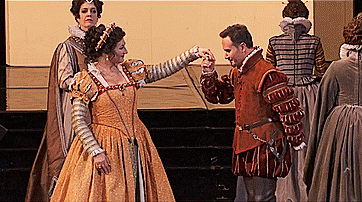
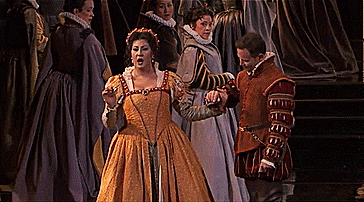




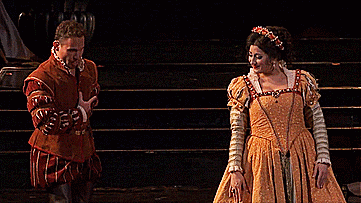


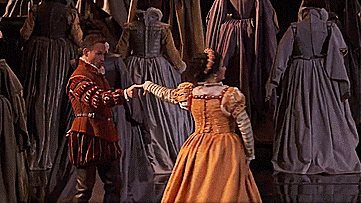
Nadia Krasteva & Mariusz Kwiecien in Don Carlo.
8 notes
·
View notes
Text
I'm taking this coming week off work, which means I will be home on Wednesday to celebrate the Third Anniversary of the San Francisco Don Carlo, and I have two questions.
At what time do I hit play?
How many times can/should I watch it in one day?

8 notes
·
View notes
Text
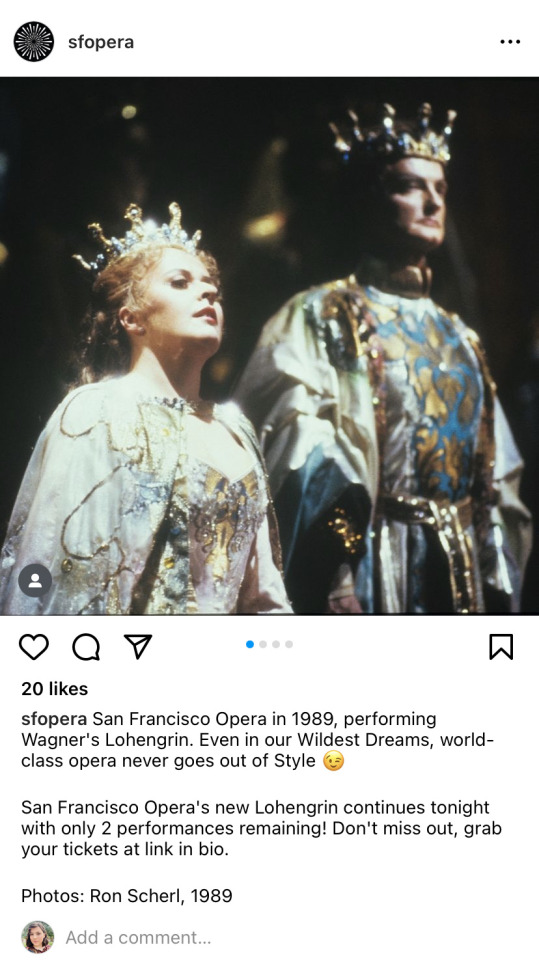
STOP
#opera tag#opera#taylor swift#1989 tv#1989 taylor's version#sf opera#san francisco opera#A++ social media content
9 notes
·
View notes
Photo

11 notes
·
View notes
Photo

Amina Edris and Gerald Finley in the title roles of John Adams’s “Antony and Cleopatra” at San Francisco Opera. Credit: Cory Weaver/San Francisco Opera
#shakespeare#william shakespeare#shakespeare and music#music#opera#john adams#antony and cleopatra#antony#cleopatra#san francisco opera
12 notes
·
View notes
Text
Person: How gay is opera?
Me: A normal amount.
Opera:

Me: Could be gayer.
3 notes
·
View notes
Text
San Francisco Opera releases historic audio recordings
For its centennial celebrations, San Francisco Opera @SFOpera announces 'Streaming the First Century', a project offering free access to historic recordings.
1932 La Traviata, with Richard Bonell, Gaetano Merola, Claudia Muzio, Armando Agnini, Dino Borgioli, photo by Mortor
As part of its centennial celebrations, San Francisco Opera has released the first instalment of Streaming the First Century, a project offering free access to historic recordings.
The new online hub at sfopera.com/firstcentury features recordings from the company’s past, along…
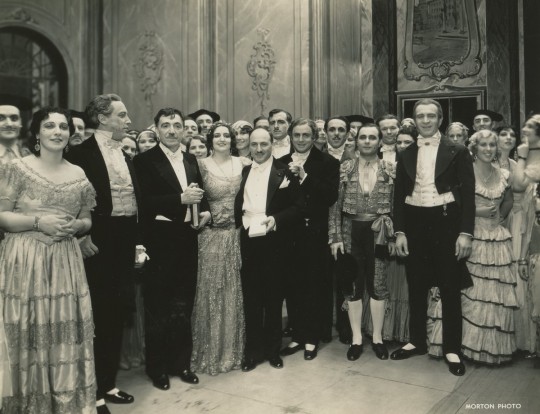
View On WordPress
2 notes
·
View notes
Text

“A finely wrought, fiercely expressive rendering of Antony and Cleopatra,” The New Yorker's Alex Ross writes of San Francisco Opera's premiere of John Adams's new work. “He long ago established an extraordinary knack for making music from the English language … The richer the language, the stronger Adams’s response.” You can read the review at newyorker.com.
#john adams#antony and cleopatra#shakespeare#san francisco opera#opera#contemporary classical music#nonesuch#nonesuch records
0 notes
Text

Renato Casaro The Blue Lightning VHS art (1986)
#sam elliott#robert culp#80s#renato casaro#movie art#tv movie#action movie#san francisco#sydney opera house#golden gate bridge
46 notes
·
View notes
Text
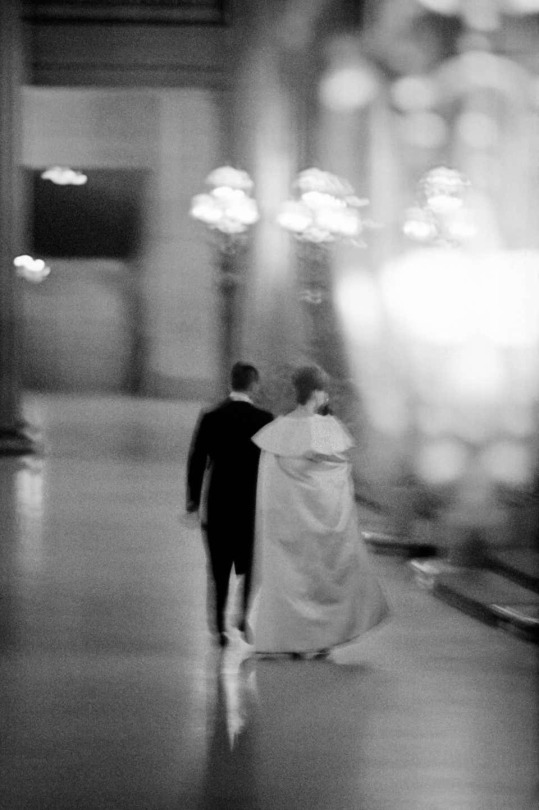
Fred Lyon, Opening Night at the Opera, San Francisco, 1949
129 notes
·
View notes
Text
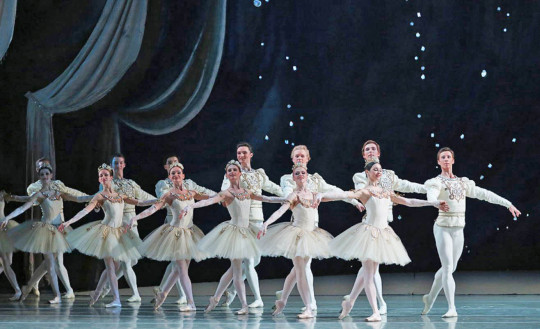
Above: the Maryinsky Ballet in the Diamonds section of Jewels. Photo: Kassir St. Petersburg
The New York Times has several new articles on the New York City Ballet to mark its 75th Anniversary Season, which opens Sept. 19. I'll be posting them all.
CITY BALLET AT 75
The Long Life and Long Reach of George Balanchine’s Butterflies
Balanchine didn’t think his ballets would last. But many have become classics, the cornerstone of repertory not just at City Ballet but around the world.
By Brian Seibert
While celebrating its 75th anniversary this fall, New York City Ballet is performing 18 ballets by its founding choreographer, George Balanchine. But to get a sense of the global standing of Balanchine, 40 years after his death, other numbers might be more telling. Last year, for instance, around 50 other ballet companies across the world performed his works, about 75 dances in total.
Balanchine likened his ballets to butterflies: “They live for a season.” But they have lasted much longer than that. They have become classics, cornerstones of the international repertory, 20th-century equivalents of 19th-century staples like “Swan Lake,” danced everywhere by all the major ballet companies and most of the minor ones, too.
These ballets, like Balanchine, emerged from the same Russian Imperial tradition as “Swan Lake,” but were shaped—as he was—by America, and by modernism and other 20th-century searches for the new. Always intimately connected to music, they sometimes told stories and sometimes, like music, were more abstract arrangements of forms and energies. They stretched ballet—in technique, in how daring and dynamic it could be, in how little outside of itself it needed — and were unparalleled in range and influence, so much so that the state of ballet is often framed as a question: Where is the next Balanchine?
City Ballet still performs by far the most Balanchine—the most ballets, the most often—but performances by other companies probably reach as many or more people, certainly in more places. All these performances, though, are connected to New York City Ballet, because the dissemination of his works remains a matter of lineage—of connections to Balanchine.

Above: Ballet Imperial (Tchaikovsky Piano Concerto #2) performed by the Paris Opera Ballet, with Valentine Colasante and Pablo Legasa. Photo: Agathe Poupeney
Before City Ballet became a durable laboratory and library for Balanchine’s choreography, he often worked as a choreographer for hire. That’s why American Ballet Theater dances “Theme and Variations,” which he made for that troupe in 1947. But few of the companies he created works for have survived, and most of the works that survived are those that became part of the City Ballet repertory. The company was the hub from which his influence radiated.
In the early years of the company, Balanchine sometimes staged works for European troupes with which he was connected: Paris Opera Ballet, the Royal Danish Ballet, what became the Royal Ballet. The reception to his innovations, especially the more radical ones, was highly variable, both abroad and in the more ballet-bereft country he had made his home. There, Balanchine was both generous and prudent with his ballets.
“He was giving them away for free, but he was in control,” said Jennifer Homans, the author of “Mr. B: George Balanchine’s 20th Century.” “Looking at the correspondence, you can see he was careful about who could do it and who couldn’t, and about which ballets could be done by others and which couldn’t.” He staged them himself, or he sent people he trusted. Francia Russell danced with City Ballet from 1956 to 1961. Since 1964, when she became a ballet master at the company, she has staged more than 200 productions of Balanchine ballets for other troupes. “They weren’t many people doing it at the beginning,” she said. “At first, I staged only ballets that I had actually danced.” Later, it became possible to consult films, but Russell didn’t use them much. “I always said I’m staging them the way I danced them when with Mr. B was with us.”
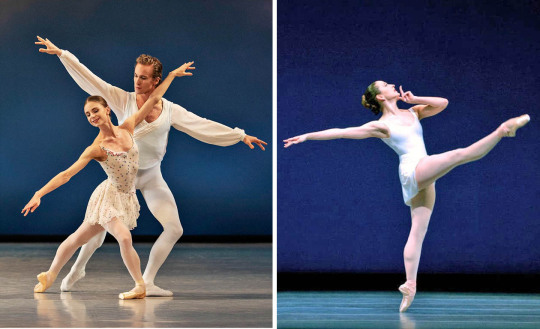
Left: Ida Praetorius and Jón Axel Fransson of the Royal Danish Ballet in Ballo della Regina. Photo: Henrik Stenberg
Right: Pacific Northwest Balllet's Carrie Imler in Apollo. Photo: Angela Sterling
It was during the 1960s that City Ballet became a dominant institution, with a custom-built theater in the new Lincoln Center. An exceptionally large grant from the Ford Foundation put City Ballet and its affiliated School of American Ballet at the helm of a program to support ballet and ballet education. Following Balanchine’s recommendations, the foundation granted seed funding to regional troupes like Boston Ballet and Pennsylvania (now Philadelphia) Ballet. Balanchine granted these fledgling companies something nearly as important: some of his works, free of charge.
That process continued as members of City Ballet founded their own companies or became artistic directors. Arthur Mitchell, the company’s first Black principal dancer, erected the repertory of Dance Theater of Harlem, founded in 1969, on a foundation of Balanchine pieces. Some City Ballet dancers found leadership roles in Europe, like Patricia Neary in Switzerland. In 1977, Russell and her husband, Kent Stowell, moved from Frankfurt Ballet to Pacific Northwest Ballet in Seattle and built it into another outpost of Balanchine repertory.
“Mr. B said he trusted me to only ask for the ballets I thought our dancers could do,” Russell said. “And whatever we wanted, it was ‘Of course, dear.’ He never asked for a penny.” These ballets, she added, “were an education in classical dance for our dancers,” a sentiment commonly voiced by artistic directors. After Balanchine’s death, in 1983, the City Ballet diaspora spread further. In 1985, Edward Villella, a City Ballet star of the 1960s and ’70s, transformed Miami City Ballet into a Balanchinian troupe. That same year, Helgi Tomasson, after dancing with City Ballet for 15 years, became artistic director of San Francisco Ballet, a post he held until 2022. None of these and other companies led by City Ballet alumni danced Balanchine exclusively, but there was a family connection. Successors were often in the family, too. Russell and Stowell were followed (in 2005) by Peter Boal, Villella (in 2012) by Lourdes Lopez, both former principals at City Ballet and alumni of its school.

Above: the San Francisco Ballet in Divertimento #15. Photo: Dave Morgan
By this point, acquiring a Balanchine work was no longer “Of course, dear.” Skeptical that his works could last without him, and never much interested in posterity, he left his ballets in his will not to City Ballet but to 14 dancers and colleagues. The George Balanchine Trust was formed in 1987 to bring some order and stability to the licensing and restaging. The stagers it authorized were all dancers who had been with Balanchine in the classroom and rehearsal studio.
Now Balanchine works circulated to places where they had not before been part of the repertory. Russell was the first to stage one in China, in 1987. The next year, she brought one to the Soviet Union — to the institution then known as the Kirov Ballet (now the Mariinsky), where Balanchine had trained in the first decades of the 20th century but where few of the dancers had seen his works or knew much about him.
Always, there have been questions about authenticity. Balanchine frequently changed his choreography—for different dancers and stages—so which was the right version and in whose memory of it? And beyond the steps, was the spirit transferable, the elusive and usually unspoken ideas, the all-important musicality? Disagreements about these questions—applied to companies of dancers not trained in Balanchine’s aesthetic and modifications to technique, but also to City Ballet—were perpetual and often heated. For many viewers, Balanchine after Balanchine wasn’t Balanchine at all, and couldn’t be. Balanchine had suggested as much himself. And now a new phase is coming. As Russell put it, speaking of her generation, “We’re all too old to preserve that tradition in the same way.”

Above: Left: Sandra Jennings of the Balanchine Trust rehearsing Gabriella McCann of the City Ballet of San Diego. Photo: K.C. Alfred
Right: Symphony in C, second movement, with Olga Smirnova and Dennis Rodkin of the Bolshoi Ballet. Photo: Damir Yusupov
Lopez, who is 20 years younger, made a similar point. “There aren’t many of us,” she said, “who worked with him and still talk about him as if he were next door.” But she also spoke about dancers, at Miami City Ballet and elsewhere, hungry to learn Balanchine’s aesthetic, dancers born after he died who talk about him as if they knew him.
It is those kinds of people who make Suki Schorer feel positive about Balanchine’s legacy. A City Ballet member from 1959 to 1972, she wrote a book on Balanchine technique and has been teaching at the School of American Ballet for some 60 years. Asked about Balanchine’s influence today, she listed young teachers, trained at the school, who have fanned out across the country.
Silas Farley is one. Born 11 years after Balanchine died, he encountered the Balanchine lineage at the school of North Carolina Dance Theater, which was run by the former City Ballet stars Patricia McBride and Jean-Pierre Bonnefoux. Farley became obsessed with Balanchine lore, which he absorbed deeply at the School of American Ballet and as a City Ballet member from 2013 to 2020.
“I have always had an acute sense that I’m one of the people who has been entrusted with a lot of these ideas and that, God willing, I’ll be here a long time after the people who entrusted those ideas to me,” he said on a call from Southern Methodist University, where he teaches.
His students, he said, are “empowered by all of Balanchine’s cool amendments and extensions of classical technique. They delight in the granular and the grand, the nuances and the capacity to dance more expansively, more freely.” Balanchine’s works, he added, “are such a big part of their understanding of what ballet is.”
Their understanding and everyone else’s. Those works, however altered by time, remain ubiquitous. Nikolaj Hübbe, a Danish dancer who performed with City Ballet from 1992 to 2008 and has led the Royal Danish Ballet ever since, is one of those who believe in their enduring power. “I don’t think I’ve ever worked with a dancer, even if Balanchine was foreign to them, who did not have an epiphany, a wow feeling, dancing his ballets,” Hübbe said. “Our dancers love them, revel in them. There’s a logic that speaks to all classically trained dancers. The choreography sings well. I don’t think that will ever go away.”
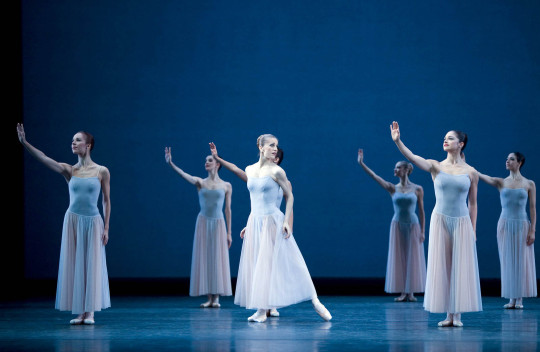
Above: Marianela Núñez and the Royal Ballet in Serenade, 2008. Photo: Johan Persson
#Balanchine#ballet#Balanchine ballet#Balanchine's legacy#rehearsing Balanchine#Maryinsky Ballet#Paris Opera Ballet#Royal Danish Ballet#Pacific Northwest Ballet#San Francisco Ballet#City Ballet of San Diego#NYCB@75#Bolshoi Ballet#Royal Ballet#Brian Siebert#Francia Russell#Lourdes Lopez#Silas Farley#Nikolaj Hubbe
25 notes
·
View notes
Text

Let Don Carlo day begin!
#sf don carlo#what an experience#truly the highlight of the pandemic#don carlo#verdi#michael fabiano#san francisco opera#opera
3 notes
·
View notes
Text

the litchral san francisco opera is now following me on instagram
#i’m so confused tbh#opera tag#opera#san francisco opera#well uh…hello then i guess#the wonderful world of social media
10 notes
·
View notes
Photo




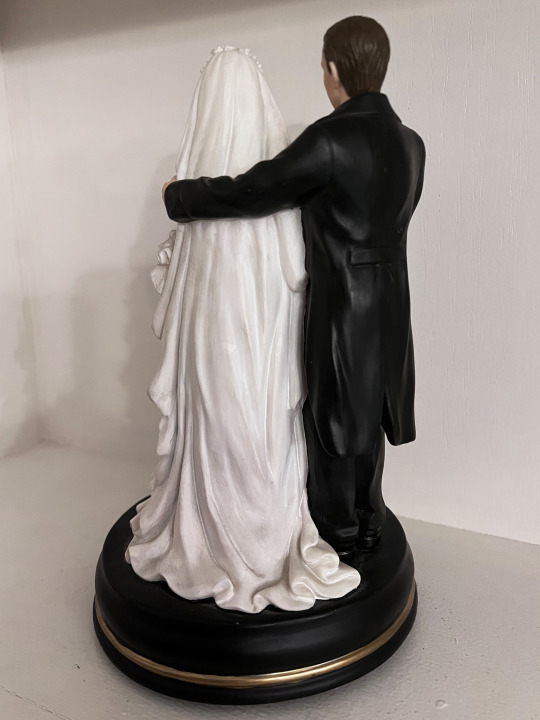
Happy Phantom Merch Monday! ✨
Some of you may be surprised that this particular music box by San Francisco Music Box Company is in my collection! Of course it plays “Music of the Night”, and I actually think it’s quite beautiful (mostly because their faces are fairly well done compared to a few others I have seen and that are in my collection) though I wish that they both had less of a serene expression. I’m not sure if this sculpture was meant to portray an actual moment of the musical or some sort of alternate timeline, but I am sure that many of you Phans love this one just the way it is!
#Phantom Of The Opera#Poto#Merch Mondays#Erik/Christine#Wedding dress#San Francisco Music Box Company
90 notes
·
View notes
Text









Lee Vogt’s SONG OF THE WEEK: “What Could You Do?” https://leevogt.bandcamp.com/track/what-could-you-do A PG-13 magnum opus—a mini-pop/rock opera that tells the story of a man’s first time: “…it was completely unfair and born from a very limited understanding of male physiology but carried out by ill-steered feminism.” On a cosmic jukebox this would play between Davy Jones (Monkees), Randy Newman, and Harry Nilsson. For the full back-story click on the link and enjoy the music!
Lee Vogt: arrangement, keyboards, production, lead vocals & narration
Johnny J. Blair: arrangement, bass, guitar, keyboards, & production
Jim Helman: drum & percussion programs, engineering, & keyboards
#poprock #singersongwriter #DavyJones #Monkees #RandyNewman #HarryNilsson #Nilsson #collegeromance #magnumopus #malevirgin #malephysiology #feminism #LeeVogt #johnnyjblair #jimhelman #berkeley #california #rockopera
#johnny j blair#singer songwriter#music#san francisco#pop rock#Lee Vogt#Nilsson#Davy Jones#Monkees#Randy Newman#college romance#male virgin#feminism#Jim Helman#Berkeley#California#rock opera#Bandcamp
2 notes
·
View notes